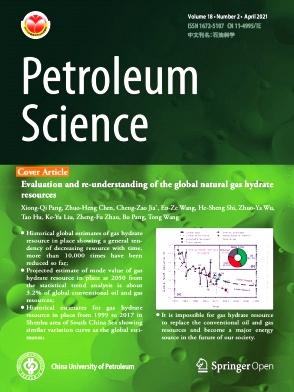Coupling mechanism analysis of CO2 non-Darcy flow in multi-scale reservoirs: A case study of the life-cycle process of fracturing-development in shale oil reservoirs
IF 6
1区 工程技术
Q2 ENERGY & FUELS
引用次数: 0
Abstract
With policy support for carbon capture, utilization, and storage (CCUS), an integrated approach that combines energy storage fracturing, CO2-enhanced oil recovery (EOR), and storage emerges as a promising direction for the shale oil industry. The process of energy storage fracturing induces significant changes in the pressure and saturation of the medium. However, conventional simulations often overlook the effects of fracturing and shut-in operations on the seepage field and production performance. Furthermore, fractured shale reservoirs exhibit complex non-Darcy flow characteristics due to intricate pore structures and multi-scale porous media. A comprehensive understanding of flow mechanisms is essential for effective reservoir development and CO2 storage. This study establishes a multi-component simulation model that encompasses the life-cycle of fracturing, shut-in, production, and CO2 huff-n-puff processes, thereby ensuring the continuity of the seepage field. The model accounts for the effect of nano-confinement on phase behavior by modifying the equation of state. Furthermore, the flux term is adjusted to incorporate Maxwell–Stefan diffusion, pre-/post-Darcy flow, and stress sensitivity. The embedded discrete fracture model (EDFM) is employed to simulate multiphase flow within multi-scale media, and the results from the validation model align satisfactorily with those derived from ECLIPSE. Mechanism analysis indicates that the interaction of multiple mechanisms significantly influences both production and storage performance. Under the multi-mechanism coupling, the cumulative oil production increased by 12.01%, while the utilization and storage factors increased by 62.93% and 8.93%, respectively. The role of molecular diffusion in shale oil reservoirs may be overstated, contributing only a 0.26% enhancement in oil production. Simulation results show that the energy storage fracturing strategy can increase oil production and net present value by 12.47% and 15.07%, respectively. Sensitivity analysis indicates that the CO2 injection rate is the main factor affecting the recovery factor, followed by CO2 injection time and the number of cycles, with fracturing fluid volume having the least impact. This study develops a multi-process, multi-mechanism simulation framework for multi-scale shale oil reservoirs. This framework provides a robust evaluation system for CCUS-EOR, facilitating informed decision-making in fracturing stimulation, development planning, and parameter optimization.
求助全文
约1分钟内获得全文
求助全文
来源期刊

Petroleum Science
地学-地球化学与地球物理
CiteScore
7.70
自引率
16.10%
发文量
311
审稿时长
63 days
期刊介绍:
Petroleum Science is the only English journal in China on petroleum science and technology that is intended for professionals engaged in petroleum science research and technical applications all over the world, as well as the managerial personnel of oil companies. It covers petroleum geology, petroleum geophysics, petroleum engineering, petrochemistry & chemical engineering, petroleum mechanics, and economic management. It aims to introduce the latest results in oil industry research in China, promote cooperation in petroleum science research between China and the rest of the world, and build a bridge for scientific communication between China and the world.
 求助内容:
求助内容: 应助结果提醒方式:
应助结果提醒方式:


